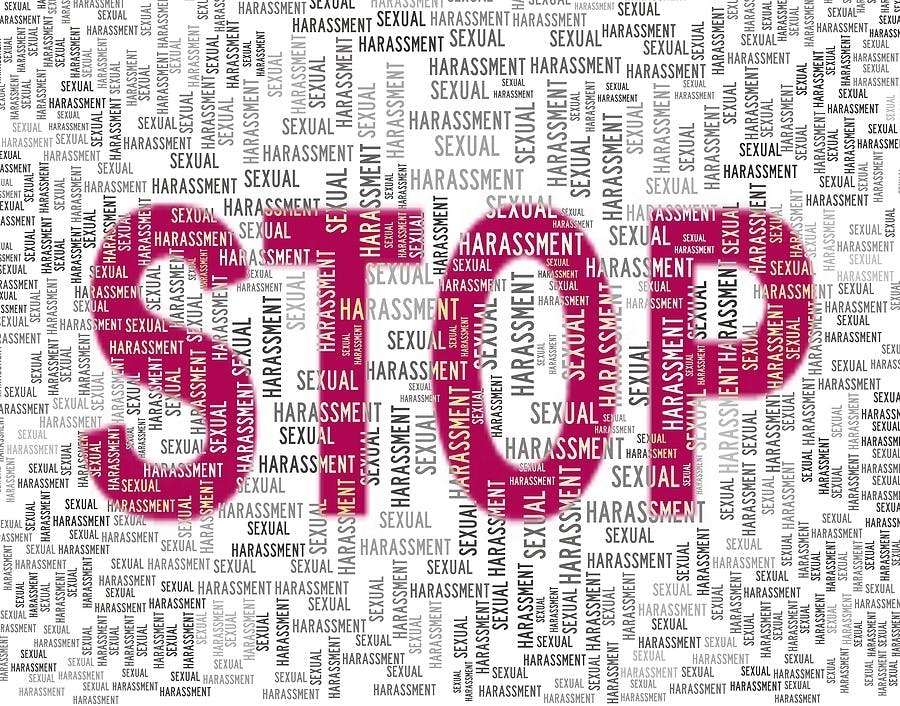Like many articles written by lawyers, this one begins with a client story. While adapting to remote work due to the COVID-19 pandemic, a client began holding a Zoom happy hour to keep employees connected. For the first few weeks, things went well. People were engaged and thoroughly enjoying getting to know their coworkers better through glimpses of their lives at home. What started as an awkward but well-meaning exercise turned into a truly relaxed gathering of colleagues at the end of the week.
And of course, that’s when the trouble started.
One employee decided to have “fun” with Zoom’s greenscreen function. Suddenly, his background was an unflattering meme of Nancy Pelosi. Then it turned into a photo of a woman in a bikini. Then it turned into a photo of multiple women in bikinis.
Colleagues’ reactions ranged from stunned silence to awkward “What is going on?” chuckles. What no one did, however, was actually say the pictures were offensive, or that they were offended — that is, until someone went to HR the following Monday. The setting may have been new, but the developments, and the fallout, were not.
Applying Old Concepts to New Situations
With the number of employees working remotely as a result of COVID-19 increasing, approximately 31% by June 2020 alone, dealing with sexual harassment in remote work environments will likely become a reality for many employers, if it isn’t one already.
But like previously adapting to emails, texts, instant messaging, and social media, employers should bear in mind that approaching harassment in the age of remote work is an exercise in applying old concepts to new situations. After all, company policy does not stop at an employee’s doorstep.
Just as employers send out reminders each holiday season that company policies against harassment and discrimination apply just as much to the company holiday party as they do in the workplace, companies should remind employees that these policies apply while everyone is working remotely. Reminders about not making inappropriate comments or sending inappropriate materials over email, text, instant message, etc., may seem self-evident. But when people are working in a place where they are used to being “off the clock,” it is a good reminder to have.
Going Beyond Conduct
It is also important to note that these reminders are not only with respect to employee conduct but also the items visible on camera in an employee’s at-home workspace.
Employees are entitled to their privacy at home, but employers need to set a standard so that workers know that, at least with respect to what the camera may see, this constitutes the workplace, as well. After all, just as employees cannot show up shirtless to an office meeting, they cannot show up shirtless to a videoconference meeting from home. (That’s another story for another article.)
Companies should also be mindful of enforcing other policies that are indirectly connected to harassment, such as prohibitions against being under the influence of alcohol on working time.
Accounting for and Adapting to Technology
Employers should also account for remote work arrangements when conducting their harassment prevention training by including examples of inappropriate conduct in the remote workspace, and how employees can report concerns when working remotely.
Additionally, organizations should be mindful that certain hurdles to reporting potential harassment, such as the bystander effect, can become exacerbated by remote work. They should therefore emphasize fostering and creating a culture of responsibility and accountability in which everyone is encouraged to report improper conduct.
To that end, employers should clarify and encourage any alternate forms of reporting, such as emails, phone calls, or a Zoom (or other videoconference) meeting.
After refocusing on these core ideas, however, companies should begin adapting to the technology employees are now using. For example, while it may have been understandable for an employer not to be familiar with the concept of “Zoombombing” at the start of COVID-19, companies should be sophisticated enough now, after months of video meetings, to take some basic steps to prevent unwanted intrusions. An employee may not be able to make a claim of a hostile work environment against an employer for the action of a lone, random outsider entering a work meeting and showing inappropriate materials, but if an employer fails to take steps to prevent that from happening again, it could be seen as a disregard for that type of behavior in general.
There are plenty of easy, commonsense steps employers can take to secure their video meetings, such as using meeting passwords and a waiting room for attendees, limiting the ability of attendees to screenshare, and disabling private chat functions (to prevent people from making inappropriate comments about each other).
When receiving allegations of potential harassment, employers should also be careful not to discount them, or brush them aside. It is true that people are feeling a lot of stress and anxiety right now — it’s a pretty stressful time! — but organizations need to treat each allegation of harassment seriously and conduct the same prompt, thorough investigation they would in an office environment. It is perfectly fine to cut employees slack in some areas, but harassment, obviously, should not be one of them.
The good news is that, at their core, the basic tenets of preventing harassment haven’t changed: effective training and policies, fostering an environment of empowerment and accountability, and prompt investigation and remedial action in response to complaints.
Of course, just because those tenets are unchanged doesn’t mean they’re easy. But employees who take a considered approach to remote working and remember that the basics principles apply no matter the context will find themselves well-positioned to continue adapting in an ever-changing world.
